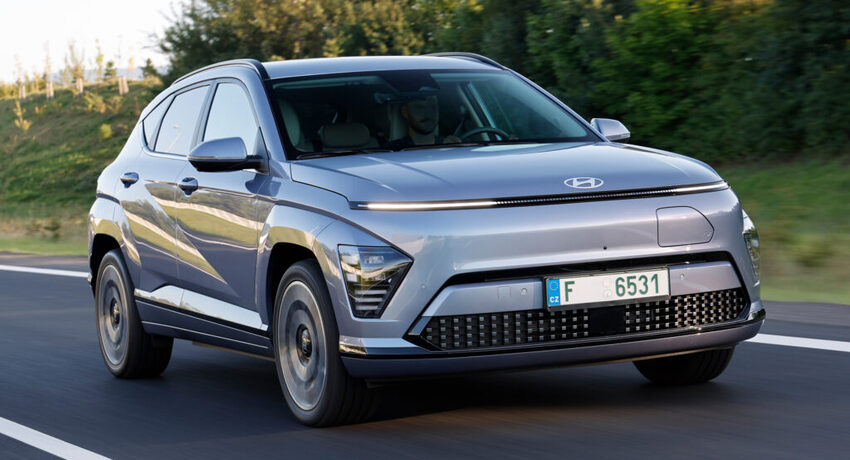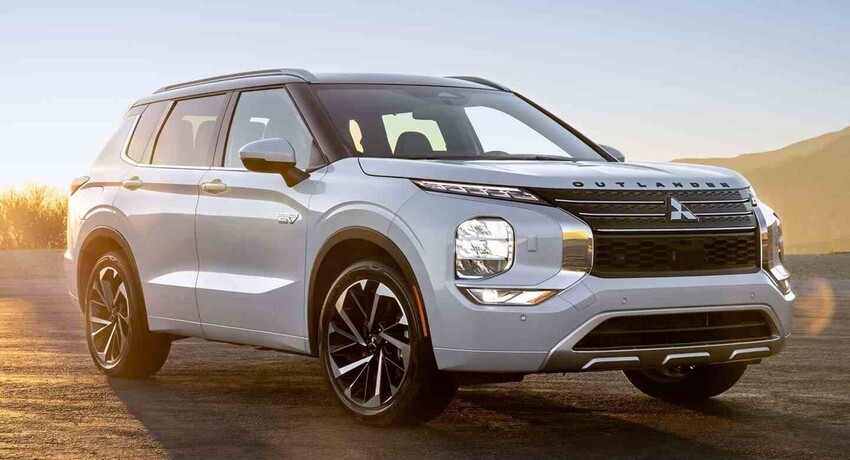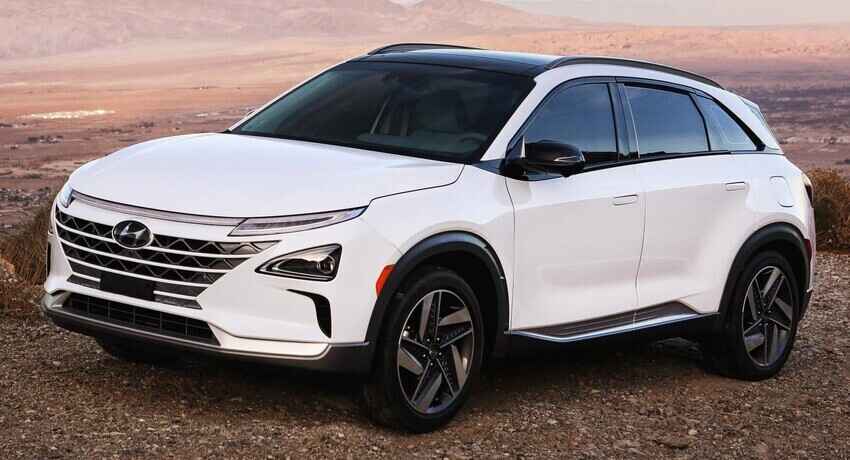Introduction
The automotive industry is shifting towards more sustainable solutions, and electric vehicles (EVs) are at the forefront of this change. With various information available online, it’s important to understand how to choose the right type of electric vehicle.
In this blog, we will explore different types of electric vehicles. We’ll cover their features, advantages, and disadvantages to help you decide which type of electric vehicle is right for you.
Table of Contents
ToggleReasons to Buy an Electric Vehicle
Before diving into the types of electric vehicles, it’s essential to understand the many benefits they offer. Let’s explore these benefits in more detail.
- Zero emissions: Electric vehicles do not emit harmful gases like CO2 or NO2, making them environmentally friendly.
- Simplicity: With fewer engine parts, electric vehicles are easier and cheaper to maintain. They don’t need components like cooling circuits or gearboxes.
- Reliability: Fewer moving parts mean fewer breakdowns. Electric vehicles don’t suffer from engine-related wear and tear.
- Cost: Lower maintenance and electricity costs make electric vehicles cheaper to run than traditional cars.
- Comfort: Electric vehicles offer a smoother, quieter ride with no engine noise or vibrations.
- Efficiency: Electric vehicles are more energy-efficient than traditional vehicles. Renewable energy-powered electric vehicles can achieve up to 70% efficiency.
Types of Electric Vehicle
Let’s explore the main types of electric vehicles to help you make an informed decision. Understanding the unique features, benefits, and drawbacks of each type will guide you in selecting the EV that best fits your lifestyle and needs.
Battery Electric Vehicles (BEVs)

Battery Electric Vehicles (BEVs) are a type of electric vehicle that are fully electric and do not use any internal combustion engine or liquid fuel. They rely entirely on large battery packs, which typically provide a range of 160 to 250 km per charge, though some models can reach up to 500 km.
Examples of BEVs include the Tesla Model 3, Nissan Leaf, and Hyundai Kona Electric.
Advantages of BEVs:
- Efficiency: BEVs offer high efficiency, with electric engines achieving 80-90% efficiency compared to 20-30% for internal combustion engines (ICEs).
- Dynamic Performance: Electric engines deliver maximum torque at zero speed, providing excellent acceleration.
- Torque Vectoring: Improved stability during cornering is achieved through faster torque response.
- Energy Recuperation: BEVs can generate electrical energy through regenerative braking.
- Cost and Maintenance: Lower running costs due to cheaper electricity and fewer moving parts.
Disadvantages of BEVs
Despite having many features, there are a few concerns to consider before adopting BEVs:
- Driving Range: Battery electric vehicles (BEVs) typically have a range of 240–320 km, which is less than internal combustion engine (ICE) vehicles. However, BEVs are ideal for those with a daily commute of 70–100 km.
- Initial Cost: BEVs have a higher upfront cost compared to ICE vehicles. Despite this, their maintenance and running costs are significantly lower over time, making them more cost-effective in the long run.
- Charging Infrastructure: A major concern for BEVs is the lack of charging infrastructure. Home or workplace charging is usually sufficient for daily commutes, but long-range drives require more public charging stations.
- Charging Time: Charging a typical BEV with a 60 kWh battery takes about 8 hours from empty to full, covering up to 320 km. Fast-charging stations can reduce this time to around 30 minutes.
Plug-In Hybrid Electric Vehicles (PHEVs)

Plug-In Hybrid Electric Vehicles (PHEVs) are a type of electric vehicle that has a regular combustion engine and an electric motor that you can charge. This helps them use less fuel during everyday driving. A good example of a PHEV is the Mitsubishi Outlander.
Advantages of PHEVs:
- Reduced Fuel Consumption: By utilizing electric power for short trips and relying on the combustion engine for longer journeys, PHEVs reduce overall fuel consumption and emissions compared to conventional vehicles.
- Higher Power Output: The electric motors in PHEVs typically offer higher power output and torque compared to traditional hybrids. This results in improved acceleration and overall driving performance.
- Cost Savings: While the initial cost of PHEVs is higher than conventional vehicles, they often result in lower fuel costs over time due to their ability to run on electricity.
Disadvantages of PHEVs:
- Higher Initial Cost: PHEVs are generally more expensive to purchase than conventional or hybrid vehicles due to the combination of electric and combustion powertrains.
- Charging Infrastructure Needs: To maximize a PHEV’s electric range, access to charging is essential. Installing a home charger may add extra cost.
- Complexity and Maintenance: PHEVs have both electric and combustion components, which can increase maintenance complexity and costs compared to conventional vehicles.
- Limited Electric Range: PHEVs typically offer 48–80 km of electric range per charge, which may be insufficient for long trips relying solely on electric power.
- Weight and Cargo Space: The additional battery and hybrid drivetrain components add weight to PHEVs, which can impact fuel efficiency and reduce cargo space.
Hybrid Electric Vehicles (HEVs)

Hybrid Electric Vehicles (HEVs) are a type of electric vehicle that combines a conventional internal combustion engine with an electric motor. They cannot be plugged into the grid, unlike PHEVs; instead, the battery is charged by the engine and during braking. A good example of a HEV is the Toyota Prius.
Advantages of HEVs:
- Improved Fuel Efficiency: HEVs combine an electric motor with a traditional combustion engine to lower fuel costs.
- Extended Range: HEVs do not rely solely on electric power and can use gasoline to extend their driving range. This eliminates range anxiety and ensures that drivers can travel longer distances without needing to recharge.
- Availability and Affordability: HEVs are widely available and generally have a lower initial cost compared to BEVs and PHEVs. This makes them a more accessible option for many buyers.
- Regenerative Braking: HEVs use regenerative braking to convert kinetic energy into electrical energy during braking. This energy is stored in the battery and used to power the electric motor, improving overall efficiency.
Disadvantages of HEVs:
- Limited Electric Range: HEVs have a limited electric range compared to BEVs and PHEVs. The electric motor is primarily used to assist the combustion engine, and the vehicle relies on gasoline for longer trips.
- Maintenance Complexity: HEVs have both electric and combustion components, which can increase maintenance and repair complexity. The combination of these systems can lead to higher maintenance costs.
- Environmental Impact: While HEVs are more fuel-efficient than traditional vehicles, they still rely on gasoline and emit greenhouse gases. This makes them less environmentally friendly compared to BEVs.
- Battery Life and Cost: The battery in an HEV may eventually need to be replaced, which can be costly. Additionally, battery degradation can impact performance and fuel efficiency over time.
Fuel Cell Electric Vehicles (FCEVs)

Fuel Cell Electric Vehicles (FCEVs) are a type of electric vehicle that uses a mix of compressed hydrogen and oxygen to power an electric engine, emitting only water as a byproduct. A good example of a FCEV is the Hyundai Nexo.
Advantages of FCEVs:
- Zero Emissions: FCEVs produce zero emissions, with water being the only byproduct. This makes them a clean and environmentally friendly option.
- Quick Refueling: FCEVs can be refueled quickly, typically within a few minutes, which is comparable to the refueling time of conventional gasoline vehicles. This contrasts with the longer charging times required for BEVs.
- Long Driving Range: FCEVs generally offer a longer driving range compared to BEVs. For example, the Hyundai Nexo can travel up to 650 km on a full tank of hydrogen, making them suitable for longer journeys.
- Cold Weather Performance: FCEVs perform well in cold temperatures and harsh weather conditions, as hydrogen fuel cells are less affected by extreme temperatures compared to BEVs.
- Safety: FCEVs are designed with robust safety features to handle hydrogen safely. The risk of accidents due to hydrogen leakage is minimal, as hydrogen disperses quickly and is less likely to cause secondary fires.
Disadvantages of FCEVs:
- Limited Hydrogen Infrastructure: The availability of hydrogen refueling stations is currently limited, which can restrict the usability of FCEVs.
- High Initial Cost: FCEVs are generally more expensive than BEVs and conventional vehicles. This higher initial cost can be a barrier for many potential buyers.
- Compromised Cabin Space: The hydrogen fuel tank in FCEVs can take up significant space, potentially reducing cabin space and cargo capacity.
- Higher Running Costs: Hydrogen fuel is often more expensive than electricity, leading to higher running costs compared to BEVs. However, prices may decrease as hydrogen production and infrastructure improve.
- Environmental Impact of Hydrogen Production: While FCEVs themselves produce no emissions, the production of hydrogen often involves energy-intensive processes. If hydrogen is produced using fossil fuels, it can still contribute to greenhouse gas emissions.
Extended-Range EVs (ER-EVs)

Extended-Range Electric Vehicles (ER-EVs), are a type of electric vehicle where the supplementary combustion engine is used solely to generate electricity to recharge the battery and is not mechanically connected to the wheels to drive the vehicle. Instead, the vehicle is powered entirely by the electric motor. A good example of an ER-EV is the BMW i3.
Advantages of ER-EVs:
- Reduced Range Anxiety: ER-EVs combine the benefits of BEVs with an internal combustion engine that generates additional energy, reducing range anxiety by extending the vehicle’s range.
- Increased Range Autonomy: The supplementary combustion engine charges the battery, allowing drivers to travel longer distances without worrying about battery depletion.
- Efficient Energy Use: ER-EVs maximize the efficiency of the electric powertrain. The combustion engine is used primarily to generate electricity, not to drive the wheels.
- Versatility: ER-EVs operate on electric power for daily commutes and switch to the combustion engine for longer trips, offering flexibility and extended range.
- Lower Fuel Consumption: The combustion engine in ER-EVs operates at optimal efficiency to charge the battery, reducing overall fuel use and emissions compared to traditional hybrids.
Disadvantages of ER-EVs:
- Higher Initial Cost: ER-EVs are more expensive than BEVs and conventional hybrids due to the added complexity of having both an electric powertrain and a combustion engine.
- Increased Maintenance Needs: More components in ER-EVs can lead to increased maintenance complexity and costs compared to purely electric or traditional vehicles.
- Environmental Impact: The combustion engine still uses fossil fuels and produces emissions, impacting the overall environmental benefits.
- Battery and Engine Weight: The combined weight of the battery and combustion engine can affect the vehicle’s efficiency and handling, reducing the efficiency gains of the electric powertrain.
Conclusion
Each type of electric vehicle (EV) offers unique advantages and disadvantages.
Battery Electric Vehicles (BEVs) provide zero emissions and low maintenance but face challenges with range and charging infrastructure.
Plug-In Hybrid Electric Vehicles (PHEVs) combine electric and combustion power, offering flexibility but with higher costs and complexity.
Hybrid Electric Vehicles (HEVs) improve fuel efficiency and reduce emissions but still rely on gasoline and face maintenance challenges.
Fuel Cell Electric Vehicles (FCEVs) offer zero emissions and quick refueling but struggle with limited hydrogen infrastructure and high costs.
Extended-range electric Vehicles (ER-EVs) provide reduced range anxiety and versatile driving options but come with higher initial costs and increased maintenance needs.
Considering these factors can help in choosing the right type of electric vehicle based on individual needs and priorities, ultimately contributing to a more sustainable and efficient transportation future.
FAQ
1. Is an EV car worth buying?
Yes, an EV car is worth buying due to its environmental benefits, such as zero emissions and reduced carbon footprint.
2. What is the most reliable type of electric vehicle?
The most reliable type of electric vehicle is the Tesla Model 3. It has consistently received high ratings for reliability and customer satisfaction.
3. How long do EV batteries last?
EV batteries typically last between 8 to 15 years, depending on the vehicle model and usage.
4. How do Battery Electric Vehicles (BEVs) work?
BEVs are powered entirely by electric batteries, which provide energy to the electric motor. They do not use any internal combustion engine or liquid fuel.
5. What is the difference between PHEVs and HEVs?
PHEVs can be charged from an external source and have a larger battery. HEVs cannot be plugged in and rely on the combustion engine and regenerative braking to charge the battery.
6. What is range anxiety, and how do ER-EVs address it?
Range anxiety is the fear of running out of battery power before reaching a charging station. ER-EVs address this by including a combustion engine that charges the battery.



![Read more about the article GMC Hummer EV SUV [2024] – Price, Features, Design…](https://evelectrichub.com/wp-content/uploads/2024/08/GMC-Hummer-EV-SUV-Featured-Image-300x200.jpg)

